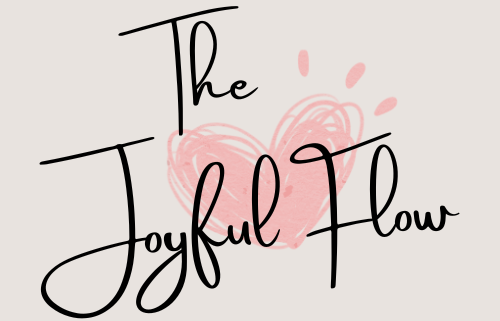Breaking bad habits is one of the most difficult yet rewarding things we can do. Bad habits hold us back from reaching our full potential and living the lives we truly want. Whether it’s smoking, nail biting, procrastinating, or anything else, ending destructive patterns takes patience and perseverance. But with the right mindset and techniques, you can stop your bad habits for good.

Before diving into the process of breaking bad habits, it’s essential to understand what a habit is and how it forms. Habits are behaviors that have become automatic through repetition. They are the brain’s way of saving energy by making routine actions easier to complete without conscious thought. This can be beneficial when it comes to positive habits, but detrimental when the habits are harmful to our well-being.
The structure of a habit can be broken down into three components: the cue, the routine, and the reward. The cue triggers the behavior, the routine is the behavior itself, and the reward is the benefit received from the behavior. Understanding this cycle is crucial because it allows us to identify which part of the habit loop needs to be addressed to make lasting changes.
It’s Difficult, But You Can Do It
Quitting bad habits is challenging, but entirely possible. The key is to have compassion for yourself, take it one day at a time, and focus on progress over perfection. Don’t expect to kick your habit overnight – real change takes time. Be patient and keep going even when you slip up.
Start by choosing just one habit to work on changing. Taking on too much at once will only set you up for frustration. Give that single habit your full attention before moving on to the next one.
When you mess up, don’t beat yourself up. Slip-ups happen to everyone. Reflect on what led to it, forgive yourself, and refocus. Self-criticism will only make change harder. You’ve got this! With commitment and self-care, you can stop any bad habit for good.
Identifying Your Triggers
One of the first steps in breaking a bad habit is to identify your triggers. These are the cues that initiate the habit loop. Triggers can be emotional, such as feeling stressed or bored, or situational, like being in a particular place or with certain people. By recognizing what prompts your bad habit, you can begin to develop strategies to avoid or alter these triggers.
For example, if stress leads you to bite your nails, finding alternative stress-relief techniques is essential. This could involve practicing deep breathing exercises, going for a walk, or engaging in a hobby that relaxes you. By replacing the negative routine with a positive one, you’re not only addressing the habit but also improving your overall stress management.
Creating a Plan of Action
Once you’ve identified your triggers, the next step is to create a plan of action. This plan should include specific, achievable goals, as well as strategies for dealing with potential obstacles. It’s important to anticipate challenges and have a response ready so that you’re not caught off guard.
For instance, if you’re trying to quit smoking, your plan might include carrying nicotine gum to help manage cravings. You might also avoid situations where you’re likely to smoke, such as parties where others might be smoking, at least until you feel more confident in your ability to resist the temptation.
Use Habit Tracking Apps
Habit tracking apps like Habitica can be extremely helpful for quitting bad habits. They essentially gamify your goals by letting you level up your character and earn rewards as you successfully work on changing habits.
Seeing visible progress each day you resist your bad habit provides powerful motivation to keep going. Apps send reminders so you stay on track and make habit formation fun. The sense of accomplishment from watching your progress grow can give you the boost you need to replace your bad habit with a good one for the long-term.
The Benefits of Technology in Habit Formation
In addition to habit tracking apps, there are other technological tools that can aid in breaking bad habits. For example, there are apps that block access to distracting websites if procrastination is your vice. There are also online support groups and forums where individuals can share their experiences and offer encouragement to one another.
Technology can also provide access to a wealth of information on habit change, from articles and research papers to online courses and webinars. This information can empower you with knowledge about the psychological aspects of habit formation and the most effective strategies for change.
Stack Good Habits
The most effective way to stop a bad habit permanently is to replace it with something positive. When you remove a habit, it leaves a void that needs filling. Stack new, healthy habits in place of destructive ones to avoid falling back into old patterns.
Develop a routine of regular exercise, meditation, journaling, or other stress-relieving activities. Lean on your support system of friends and family to help motivate you. When you get the urge to engage in your bad habit, do something good for yourself instead. Fulfilling, positive habits make bad ones far less appealing.
The Power of Positive Reinforcement
Positive reinforcement is a powerful tool in habit change. It involves rewarding yourself for making progress, which can increase your motivation and the likelihood of continuing your new behavior. The rewards should be immediate and something you genuinely enjoy, to create a positive association with the new habit.
For example, if you’re trying to stop procrastinating and you complete a task on time, you might reward yourself with a favorite treat or an episode of a show you love. Over time, your brain will start to associate the completion of tasks with pleasure, making it easier to maintain your new habit.
With consistency and self-care, you can break the cycle of any bad habit. Be patient, celebrate small wins, and keep your eyes on the bright future you’re creating by becoming your best self. You absolutely have what it takes. Now, let’s reflect: what bad habit will you commit to stopping once and for all? Roll up your sleeves and put a plan together to work on becoming the best version of yourself.




